WAVELAND, Mississippi — Although her family moved around southern Mississippi, for Genevieve Gordon, the summers in Waveland, and the promise of relaxing on a real beach with the ocean stretching out limitlessly in front of her, were a constant.
“It was a very safe place. Once you got out to Gulfside, it was just free,” she says.
Gulfside Assembly, a resort and spiritual retreat run by the Methodist Church, was located at the southern edge of Waveland and offered the only small stretch of beach along the Gulf Coast that black people were allowed to use.
“You didn't have to worry about people bothering you. You could go out on the pier. Black people didn't have piers, because they couldn't own beachfront land. So you didn't know what that experience was,” Gordon says.
In the world of the Jim Crow South, that sort of safety was rarely felt by black children. Not that the beach was always easy to get to. After all, the road to Gulfside Assembly wasn’t for black people. There weren’t any sidewalks, and the one time Gordon tried using the road instead of cutting through the woods, "some [white] guys in a truck said some things to me. And I didn't go that way anymore."
So, often alone, Gordon would make the mile-and-a-half trek through the woods from her grandmother’s house to Gulfside. It was treacherous, swampy ground, with thick underbrush, tangled vines, and more than a few snakes. But she didn't mind. For a 13-year-old in 1940s rural Mississippi, it was an adventure.
“It was fun. I was a child. I wasn’t afraid of snakes or anything like that,” she says with a laugh, recounting how she and her friends would weave their way there with beach necessities in tow. “We’d bring crabs, and it would be so heavy, we’d have to stop for a rest.” When they finally arrived, tired and breathless, the waterfront of the so-called “American Riviera” stretching wide and vast before them, they’d hunker down for a picnic. Today, virtually everything that once made up Gordon’s precious memories is gone.
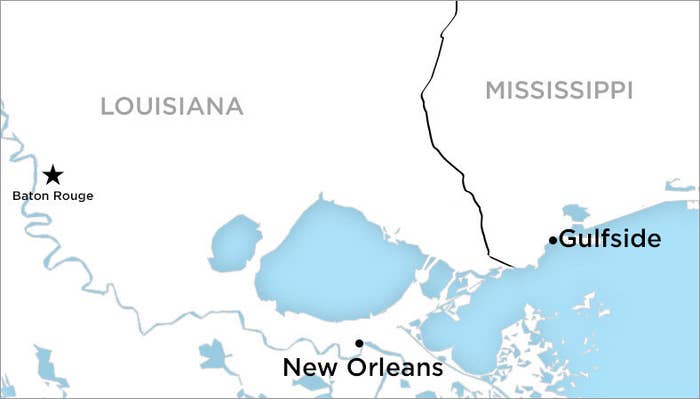
At 6:10 a.m. on Aug. 29, 2005, Katrina made landfall along this picturesque stretch of the coast. Although Gulfside and the surrounding communities of Waveland, Bay St. Louis, and Pass Christian had weathered other massive storms, Katrina was different. The ocean, pushed forward by the storm, literally swallowed them whole, destroying everything in its path.
Homes, churches, businesses, even the massive oak trees that had withstood Hurricane Camille in 1969 were uprooted, shattered, and then submerged under the violent, churning waters of the Gulf of Mexico.
When the tides finally pulled away from the coast a day later, the network of cozy bungalows, dining halls, administrative buildings, and dormitories that had once made up Gulfside were little more than splintered beams and rubble. Katrina had also laid waste to a new multimillion-dollar hotel that had yet to see its first guest.
Ten years later, the rubble has been cleared, but the ghosts of Katrina still loom large over Gulfside. Only a handful of the massive oaks that gave shade to vacationing families remain, standing like lonely sentinels over an empty lot of weeds.
“It’s so sad. So sad. It’s difficult to look out there and see where all the houses had been, where all the buildings had been. And it’s an empty space,” Gordon, now 79, says quietly of her childhood refuge.
Today, Gulfside has been largely forgotten by the national Methodist Church and a black public that — despite facing modern and undeniable forms of discrimination — is generations removed from the time when it was a rare, beautiful reprieve from the everyday brutalities of legally mandated segregation. What remains is a handful of people who have deep connections to Gulfside and are struggling to rebuild, committed to keeping it from fading into historical obscurity.
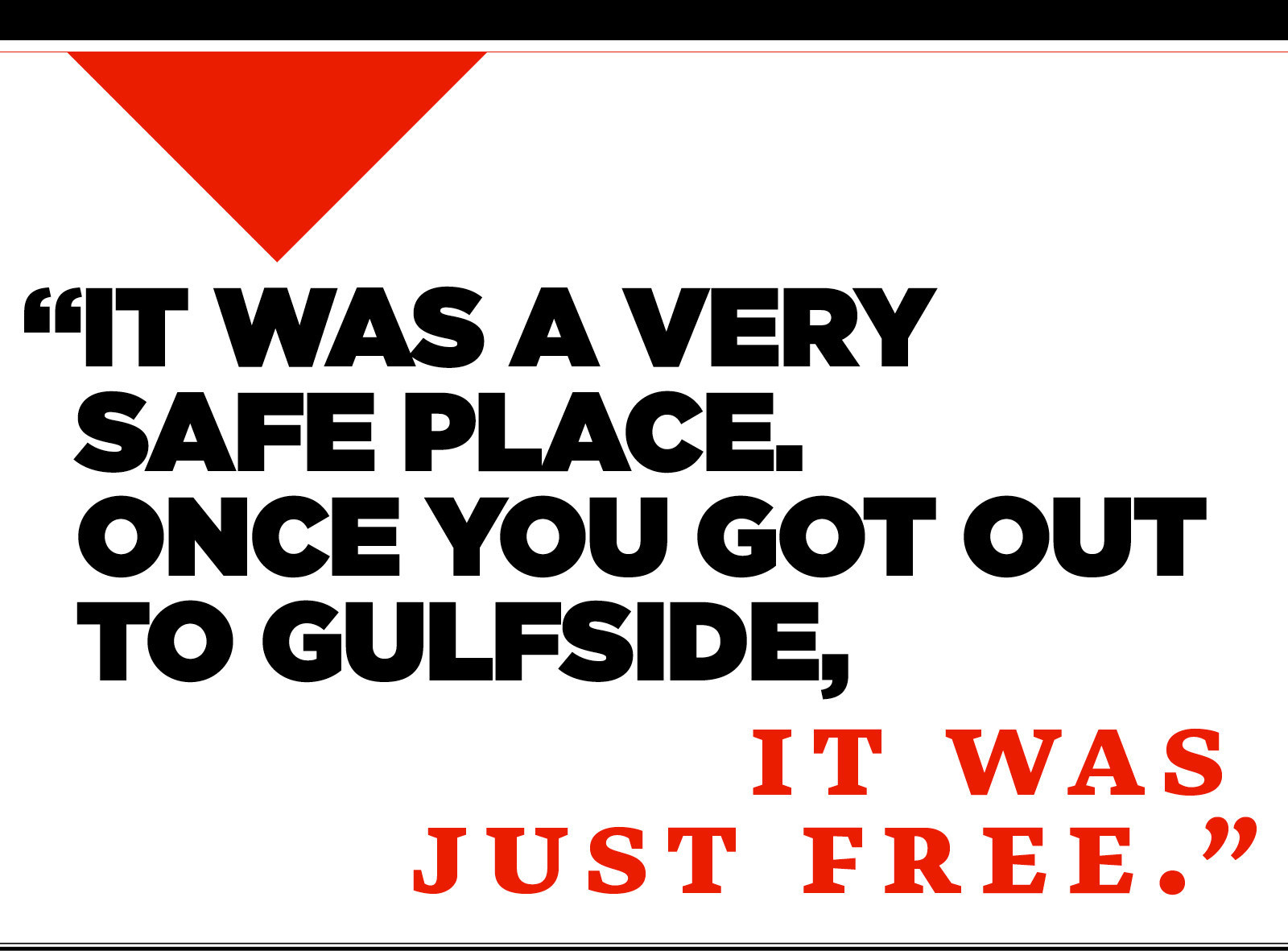
In 1921, Bishop Robert Elijah Jones was in the market for land. Having recently become one of the first black ministers to be made a bishop in the Methodist Church, Jones, a light-skinned, imposing figure, wanted to build a resort and spiritual retreat that would cater to black Americans.
Inspired by Chautauqua, an adult education movement that combined healthy living, exercise, and spiritual development and spawned whites-only resorts and camps across the country, Jones envisioned a space where the black congregations he oversaw from Texas to Florida could come to relax, study both religious and practical matters, and socialize.
The Gulf Coast, which had come to be known as the “American Riviera,” was a perfect place for such a retreat. Large tracts of undeveloped or unused beachfront land could be had relatively cheaply. And the bucolic scenery provided a perfect backdrop for the sort of spiritual and educational growth Jones had in mind.
Identifying a potential site proved easy when, in 1922, a plantation of the late President Andrew Jackson — who oversaw the Trail of Tears and aggressively fought anti-slavery efforts of the early abolitionist movement during his second term in office — came up for sale.
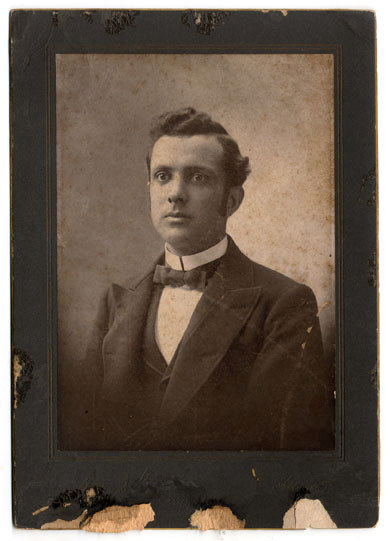
A sprawling, 300-acre property, the Jackson House had largely returned to the wild: Thick, jungle-like forests had retaken much of the land, and the once stately two-story manor had become run down. But where the casual eye might have seen nothing more than a swamp, Jones saw a compound of bungalows, dormitories, and dining halls where black Americans from across the South could come and enjoy the Gulf.
The only problem: Not only were black people barred from using beaches on the coast, but also no white landowners would ever sell beachfront property to a black man, let alone a black man looking to bring hundreds, and ultimately thousands, of other black people with him.
Luckily for Jones, however, his light skin and his position as a Methodist bishop took the question of race off the table. When he bought the property from John DeBlieux, a wealthy lumber mill owner who had once used the property as his family’s summer home, nobody thought to question whether he was black. Jones also secured the rights to a long-term lease of an adjacent 316-acre property from the state, but he ultimately didn't develop the property, and it is now the site of the present-day Buccaneer State Park.
Yet the relative ease with which he secured the land for Gulfside didn’t mean that Jones was freed from having to make difficult — and controversial — compromises with the local white community as he began to develop it. “In order for them to remain viable … they had to accommodate white supremacy,” explains Andrew Kahrl, a University of Virginia history professor who wrote The Land Was Ours, a history of black beaches in America. That meant tightly controlling the movements of people visiting Gulfside by forbidding them from leaving the grounds; ensuring that people at the retreat, many of whom came from the North, obeyed the “racial etiquette” of the Deep South; and avoiding any provocation of Waveland’s white population. Alcohol and popular music were forbidden, as was sex, and activities were kept innocuous: Adolescents were taught to swim during the summers, and outdoor Bible study classes for families were held.

Jones’ decision to work within the confines of Jim Crow to create a sanctuary for black people didn’t go unnoticed by other black leaders who more aggressively pushed for equality. “He was denounced at several points during his career,” Kahrl says, though Gulfside would later prove to play “a vital role” in nourishing the civil rights movement while essentially hiding in plain sight. Because of Jones’ concessions, “neighboring whites along the Gulf Coast mistakenly saw it as nonthreatening,” Kahrl says, noting that Jones’ ability not only to establish the retreat, but also to build it into a success was all the more remarkable given that it happened “at a time when it was very common to see African-American land stolen or [for them] to be literally run out of town.”
By 1924, Jones had established at Gulfside weekly summer camps for young men and women, many from New Orleans. He later opened a boys school for poor young black men and established the site as a vacation getaway for more affluent black families, which in turn provided jobs for some of the black residents of Waveland. Although there were already a number of resorts opening in other states that catered to black populations, according to Kahrl, Gulfside marked the first time black Americans had access to a coastal beach. As detailed in The Land Was Ours, on Aug. 31, 1927, more than 2,000 black men and women were brought to the beach by trains for the formal dedication ceremony. Afterward, black Americans from around the country would return home to their churches to “tell the story of Gulfside.”
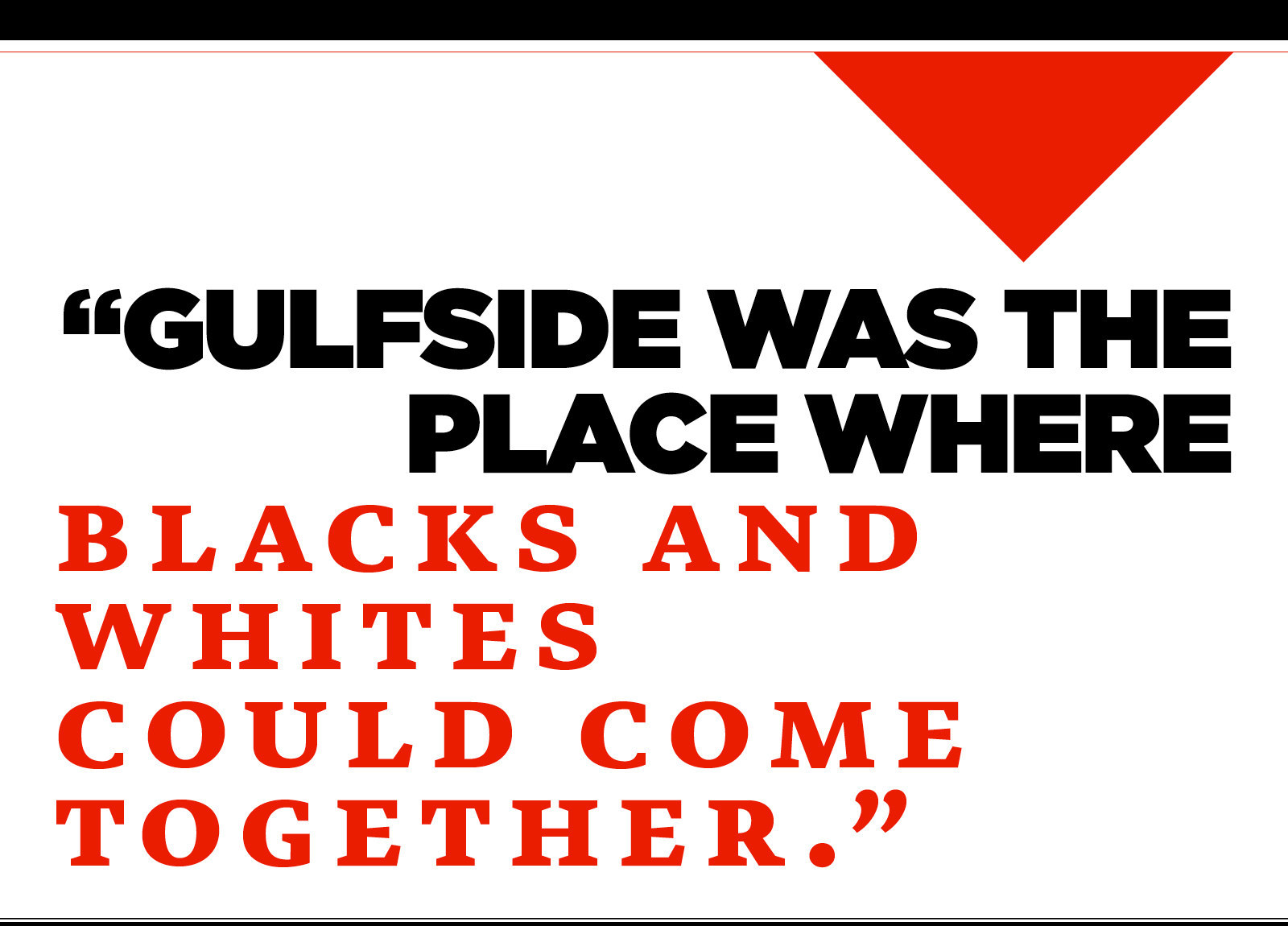
When 12-year old Mollie Stewart arrived at Gulfside in the summer of 1951 with her church’s youth group, it was the farthest she’d ever been from her family. “My grandmother would hardly let me off the edge of the yard, she was so strict,” Stewart laughs. Raised in Talucah, Alabama, along the Tennessee River, Stewart thought she knew what a large body of water looked like. That is, until she walked out onto the beach at Gulfside.
“You can’t imagine ... I could almost holler across it,” recalls Stewart, now 76. “I had never, ever seen that much water, anywhere, before. And then we could go into the water!”
By that time, Gulfside had become a major destination for church groups, families, and other organizations, receiving more than 5,000 people a year. Although most visitors came during the summer, retreats and programs were held on the grounds year-round.
Sitting in the tiny offices of Gulfside, where she is now the director and sole staffer, Stewart smiles fondly as she remembers that first trip. “It was exciting. And you’d meet kids from all over. Doing art, music, things you’d never done before,” she says. From that year until she went away to college at Tuskegee University when she was 18, she would spend a week on the grounds each summer, savoring the brief taste of independence.
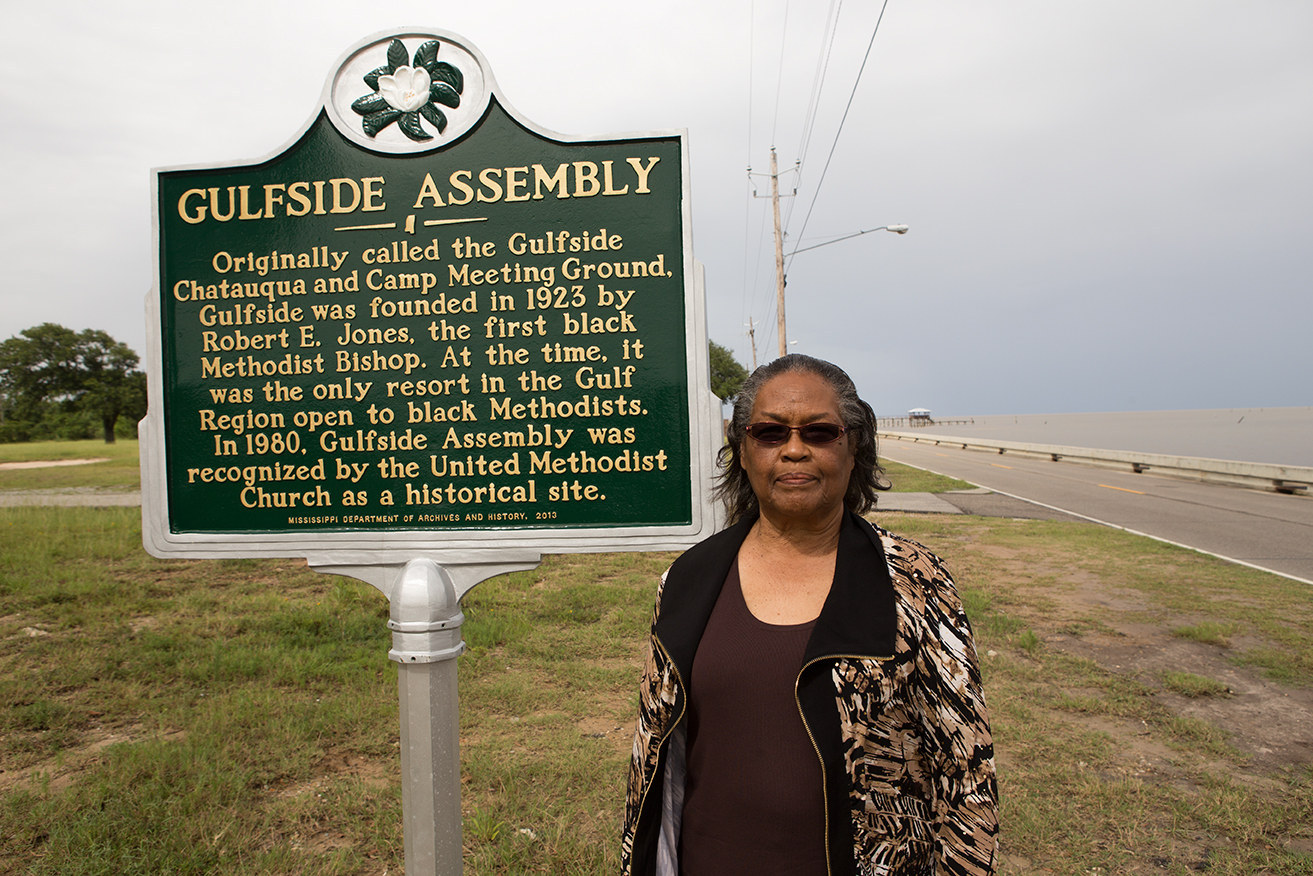
Stewart’s start as a member of the Gulfside community coincided with the early beginnings of the civil rights movement, which would also mark a shift in the site’s mission. Reflecting the racial divisions of his generation, Jones had overseen a segregated branch of the larger national church. There were periodic threats of violence against Gulfside, and when the Jackson House burned down in the 1940s, black residents of the area suspected white supremacists were behind it. But by the time of Jones’ death in 1960, Methodists, like the rest of America, were grappling with ideas of integration and moving toward a reunification of the church.
During Stewart’s third year at the retreat, in 1953, a few of the local white churches took some of their kids, the first time Gulfside had played host to both white and black children. And while Gulfside continued to cater to black families and promote its youth missions, the site also eventually became one of the few safe spaces in Mississippi where black and white civil rights activists could congregate. As the movement progressed, Gulfside would routinely play host to groups of activists from around the state, as well as the rest of the country. The Student Nonviolent Coordinating Committee — one of the largest civil rights groups in the country, which was considered extremely radical by white Southerners — held a staff retreat and conference there.
By that time, Stewart had begun organizing yearly trips to Gulfside for a new generation of young people in her community. “It was remarkable, people coming there with no antagonism. Gulfside was the place where blacks and whites could come together.”
Wary of what was happening at Gulfside, the Mississippi State Sovereignty Commission — a state agency that investigated groups and individuals that threatened the continued existence of Jim Crow — eventually came to Waveland. But they ultimately left, convinced Gulfside posed no threat because surrounding white landowners, who spent no time at the retreat, assured them nothing abnormal was happening there. Decades later, in a New Orleans Tribune article, SNCC organizer and activist Hollis Watkins would remember that “there were only three places where Blacks could meet in Mississippi during the movement: Toogaloo College, [Rust] College and Gulfside.”
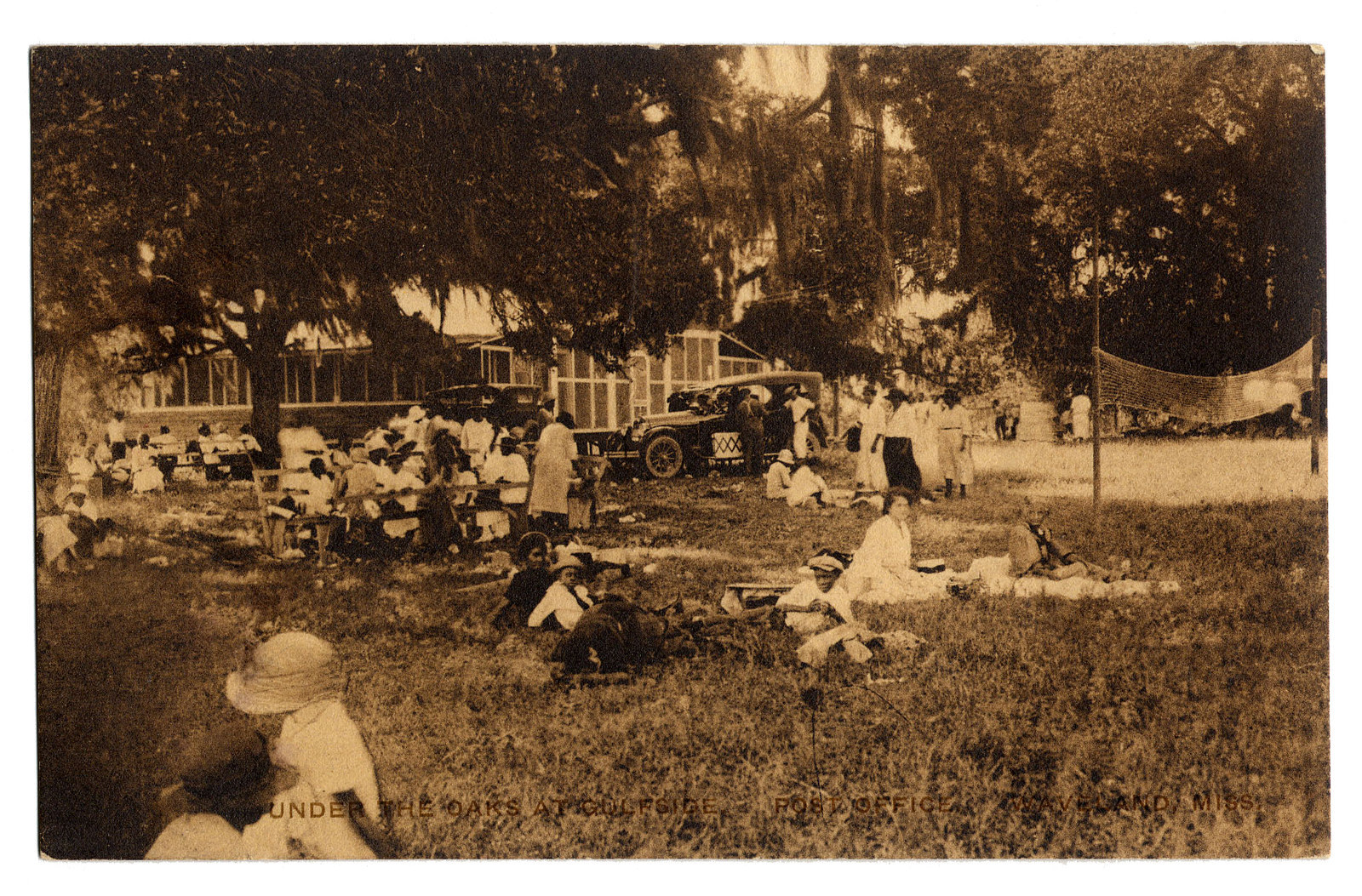
By the mid-'60s, the civil rights movement, fueled in part by work done at Gulfside, had torn down the legal and social barriers of Jim Crow. The retreat was no longer black Americans’ only access to the beaches of the Gulf Coast, and, free to go elsewhere, many families did, reducing demand for the bungalows and dormitory space. It was a problem that black businesses and organizations struggled with broadly: Once the obstacles to using white services were removed, how would they find their place in a suddenly wide-open market?
Thus, while Gulfside would remain at its heart a retreat for black families, its mission necessarily evolved. In the 1970s, its leadership increasingly began focusing on drug treatment and anti-poverty efforts, and beginning in the 1980s, its emphasis turned to catering to the region’s aging black population. The facilities eventually became a regional center for Methodist “elder hostels”: church-organized retreats during which participants from across the country would travel to Gulfside to attend lectures on the history of the Gulf Coast and Methodist theology.
That shifted mission brought new converts to Gulfside, including Barbara Ihne, a white woman who had participated in the civil rights movement while in college at Ole Miss in the late ’50s. Long active in the Methodist church, Ihne first came to Gulfside with an elder hostel group in the ’80s. She quickly became a devotee, drawn not only by the picturesque setting but also by the communal atmosphere and service-oriented missions of the retreat. She and her husband, who was a Methodist minister in Arkansas and Missouri, began vacationing and volunteering there for weeks at a time. “We loved the place, because it was so welcoming,” she remembers.
Still, by the 1990s, Gulfside was no longer as vibrant as it once was. Fewer people were vacationing at the site, and as it began to fade from the memories of the new generation of religious leaders, it also saw fewer church groups. Receiving fewer donations from individual congregations, as well as the national Methodist Church, the board of directors sold off portions of the land, and Gulfside was forced to run on a tighter budget. Many of the bungalows hadn’t been updated in decades, and few had phones or televisions.
As the number of visitors continued to dwindle, Ihne was eager to help out. Before large groups would come for meetings, she’d make the 10-hour drive from her home in Decatur, Arkansas, just to spend her day at the local laundromat and help to wash bedding. “It takes a long time washing 140 sets of sheets!” she says with a chuckle. But the long drives and hours of menial work meant nothing to her. “It’s because I loved the place. I still love the place.”
A plan to open a retirement home catering to the black community in the Gulf Coast — which would have sat directly adjacent to a Waveland neighborhood — was stymied when the neighborhood’s white residents complained that “their property values would go down because [black] families would want to move in,” Ihne says.
So, with revenues declining, debts mounting, and Gulfside struggling to move forward, then-Executive Director Marian Martin, who had run the assembly for more than a decade, hit on an ambitious and potentially risky plan. While the adjacent Buccaneer State Park — which features waterslides, a wave pool, and a golf course — was a major draw for New Orleanians looking to escape the brutal summer heat, there wasn’t a hotel close to the beachside park. Gulfside could fill the void.
Construction of the $2.8 million two-story complex was completed in July 2005. With summer about to end and school gearing up to start at the end of August, the hotel wouldn’t begin seriously generating revenue until the following year. But Gulfside officials were already preparing to use it to house the larger groups of retreat attendees that would come during the down season.
On Aug. 13, 2005, Martin, the Gulfside board of directors, and other dignitaries officially opened the hotel. Though the rooms were still being furnished and reservations had yet to be booked, they were nevertheless hopeful that they had turned the corner on securing the retreat’s long-term viability.
Two weeks later, Hurricane Katrina wiped out that hope. “We had it for 16 days,” Stewart says. “The building went away, but the mortgage didn’t.”

Katrina’s devastation of Gulfside was absolute, and its effects have continued to cripple efforts to resurrect the retreat. Martin, whose home was also wiped out by the storm, ultimately moved to Atlanta to live with family, relocating Gulfside’s offices over 400 miles away with her as she worked to rebuild in the years immediately following the storm.
“We just lost all kind of identity,” Stewart remembers. “I said that office cannot stay in Georgia. It has to come here, even if we live in a cracker box. It cannot have its identity there. Nobody knows us there.” The offices were ultimately reopened in Waveland in 2006.
What Ihne saw at Gulfside when she went to spread her husband’s ashes at the site that year was heartbreaking. “I was really saddened by the fact that nothing had been done yet,” she says.
Initially, however, there was promise: Officials from the Federal Emergency Management Agency insisted they were committed to helping everyone along the Gulf Coast rebuild, making promises of assistance for cities, businesses, and others who had been affected. But, in a story all too familiar along the still struggling coast, the money never came. “They said we were not qualified,” Stewart says with a sigh of resignation, explaining that like many affected by Katrina, they were never given a clear answer as to why. And as far as insurance, the board of directors had already decided to use that money to pay off Gulfside’s existing debts from before the storm.
In 2009, Martin stepped down as executive director, and Stewart, who was living in rural North Carolina, where she ran the Hinton Rural Life Center — a Christian retreat that also works with small churches in rural North Carolina — took over and moved to Waveland. As a lay member of the group’s small board of directors, she had been intimately involved in its work and the efforts to resurrect it.
Stewart arrived in Waveland as the board was moving forward with an ambitious plan for redeveloping Gulfside yet again: a massive new complex featuring a retirement home for low-income elderly residents of the region, a separate retirement “community” with detached homes for purchase, new bungalows, and a state-of-the-art retreat and conference center (the new home was to be closer to the beach, rather than next to a neighborhood). Dubbed “Sea Song” — the original name of President Jackson’s house and an intentional nod to the site’s history — the multimillion-dollar project was designed to take advantage of the clean slate Katrina had created and to help Gulfside continue ministering to the poor, youth, and elderly while remaining financially sustainable.
Initially, the plan seemed like it could actually happen, Stewart says. A number of people, most of whom were black and had vacationed at Gulfside throughout the years, put down deposits for homes in the retirement community; a dearth of hotels in the region meant the complex would be filling a key commercial hole; and with most of their debts paid off, they could have been in a solid position to secure loans for the project.
“Then the economy dropped,” Stewart says. With the recession, the well of potential investors for individual units quickly ran dry. A year later, as Gulfside’s leaders planned to roll out a slick new website to promote Sea Song, the Deepwater Horizon oil spill happened. The spill dealt an even further blow to the Gulf Coast’s already crippled economy and set back post-Katrina recovery efforts throughout the region.
“When it rains, it pours,” Stewart says quietly.
As Sea Song remained stalled for months, and then years, smaller but no less frustrating setbacks continued to strike. In 2012, looters broke into a mobile home Gulfside was using as an on-site office and stole the lights and wiring, making it impossible to work out of the space. Being on site, Stewart says, was a critical step in assuring potential financial backers that Gulfside wasn’t being abandoned, and the lack of a physical presence cost it funding from some churches that had traditionally made donations throughout the years. Looters also stole the historic roadside signs for Gulfside and Buccaneer Park, both of which had been damaged during Katrina. While the latter was recovered in a salvage yard, Stewart says Gulfside’s sign was never found. By 2013, with literally every sign that a retreat had ever even existed on the site gone and no momentum behind the Sea Song plan, Stewart found herself at a crossroads. That’s when she and Ihne decided to take action.

Although Stewart and Ihne had met in passing over the years at Gulfside, it was when Stewart took over as director that the two struck up a friendship. “I think she’s done a fantastic job with what she has to work with,” Ihne says, adding that while “she has had an extremely rough time … Mollie is absolutely committed.” Despite her setbacks, Stewart has continued Gulfside’s various ministries, partnering with local churches and nonprofits to conduct programs for college students, coordinating with small rural congregations, and helping victims of human trafficking in the Gulf Coast region. The population she serves remains largely black.
Ihne also urged Stewart to begin taking baby steps toward rebuilding Gulfside as a space to continue carrying out her ministry work, and to put the Sea Song project on pause. “I said, ‘Mollie, I think we need something on the site. Let’s build a chapel to let people know we’re still here,’” Ihne says. She began sending monthly checks to Gulfside, as well as fundraising in Methodist churches. “We told the story of Gulfside and the work they were doing,” she says.
Scaling back their plans has paid off: Construction on the simple open-air chapel was completed in August, and a christening ceremony is to take place this fall. Ihne and Stewart hope the building will let investors know they are serious about reclaiming Gulfside’s physical place on the coast and create a toehold for future projects.
Waveland city officials also eventually paid the $2,000 for a new historical sign to be placed on the site. Yet despite the modest progress, Ihne is skeptical that Gulfside will ever fully return. Asked about the future, she is blunt. “I don’t know. I really don’t know. It depends on what happens in the next year," she says, as well as whether a large infusion of money can be found. "I get really depressed sometimes, but I don’t give up."
Likewise, Stewart says so long as she’s able to continue telling the story of Gulfside, she’ll keep at it — and will resist any push to abandon the 60-odd acres that are left of what a local Mississippi paper once called “A Mecca on the Gulf.”
“I wouldn’t sell it. No. That [was] the only black-owned land [on the Gulf],” she says, a determined look in her eyes. “For us, we know it’s important to maintain our presence there.”
While Jim Crow no longer reigns supreme in the Deep South, poverty and institutional racism have continued to hurt the black population of the Gulf Coast region. Many elderly black Americans also lack the family wealth to afford adequate long-term care. Establishing a low-income retirement home like the one that was planned as part of Sea Song could help fill a vital need in the region. Additionally, the effort to resurrect Gulfside comes at a critical moment for the black community. A new generation of activists has emerged in the Black Lives Matter movement, and places like Gulfside can provide a key link to the history of the civil rights era.
“It was the place for the black church [before the 1980s]. So most black churches were aware of Gulfside. And they aren’t today,” Stewart says. “It’s remarkable. We didn’t have no phones, no pagers, no nothing. Now we have all this communication, and folk down the road, who are black, have not heard of Gulfside.”
“This is a place of great historical significance, not just to African-Americans, but also to all Americans,” Kahrl says, warning that allowing Gulfside to wash away would be a mistake. “It should not just be wiped off the map. There’s a lot in that land that the storm couldn’t take away.”
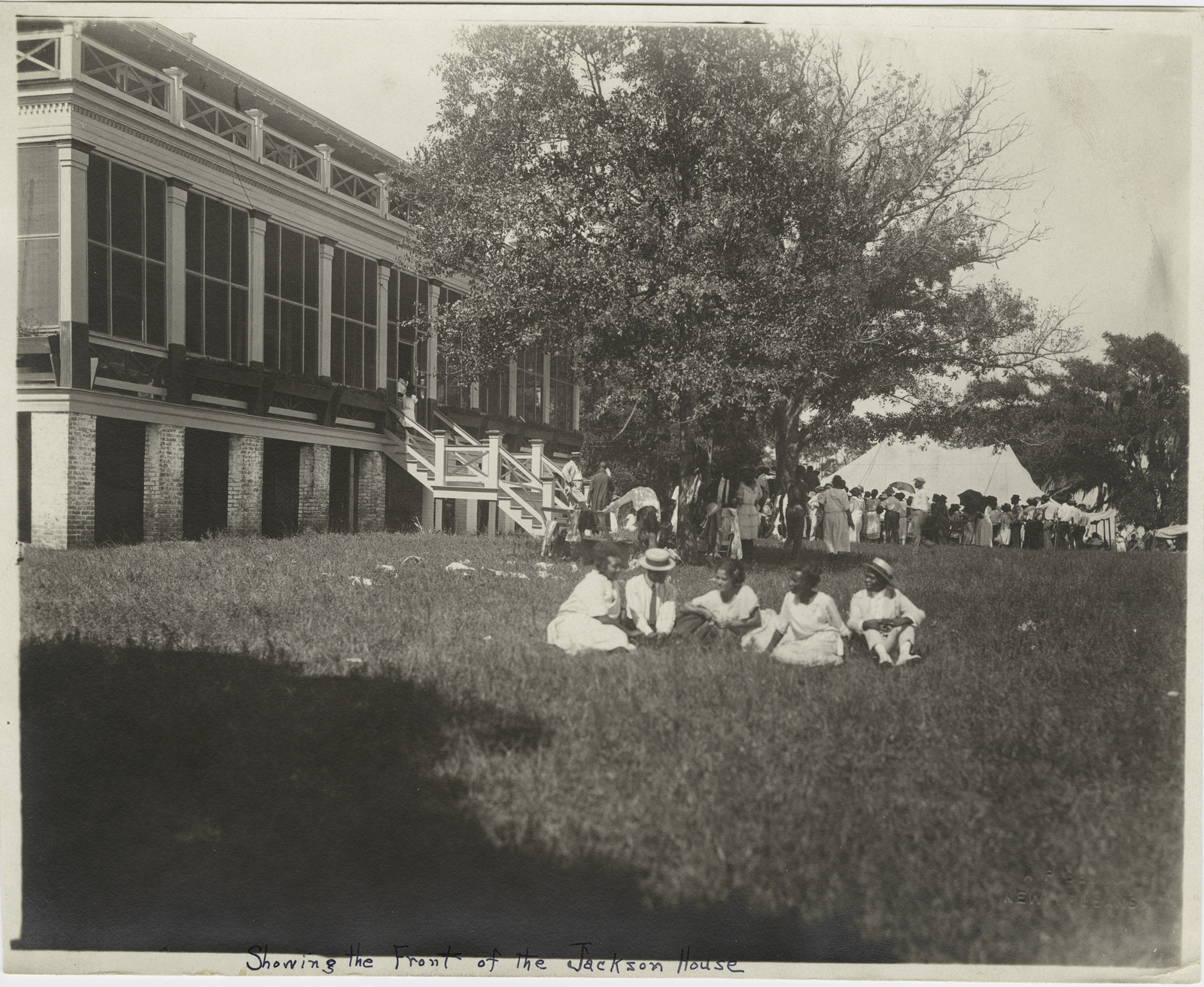
Update
The spelling of Rust College has been updated in the direct quote from the New Orleans Tribune.

